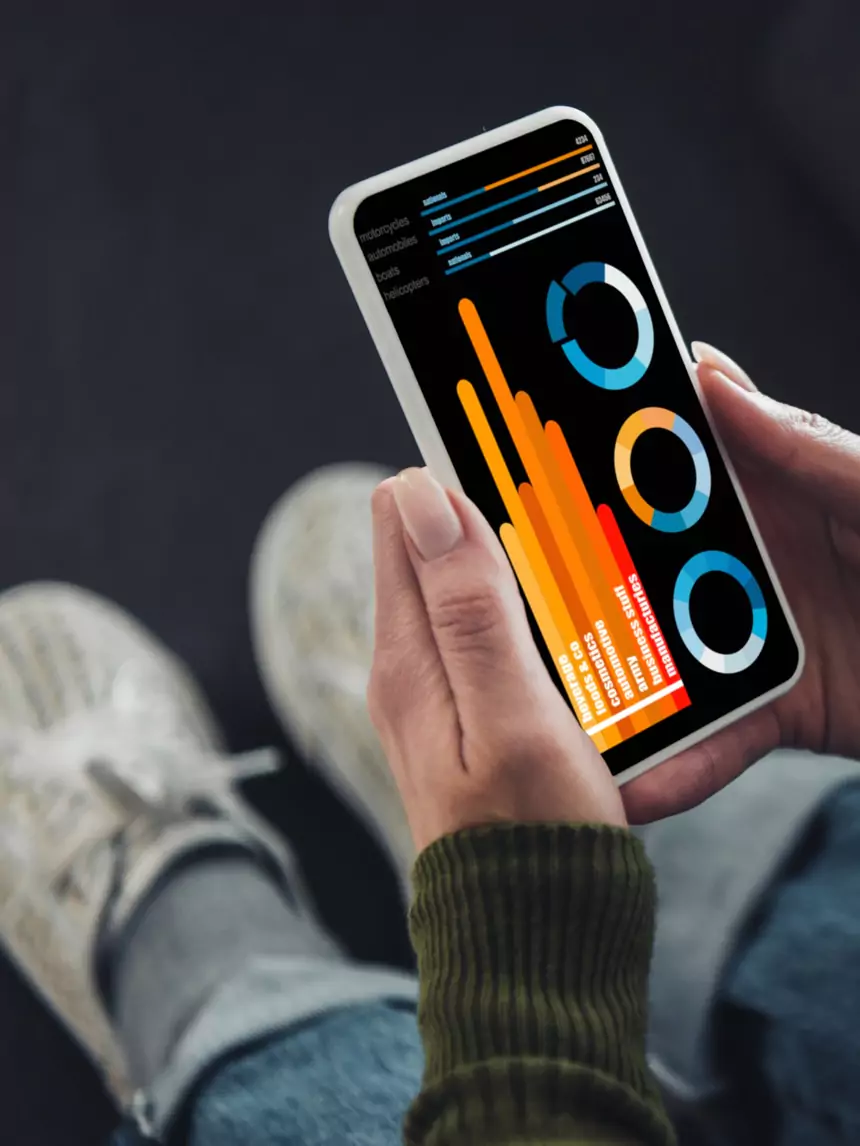Co-Founder Taliferro
Imagine you're at a major sports game, and you've got your smartphone in your hand, trying to keep track of other games and player stats in real time. Now think about how frustrated you'd be if the apps were slow, or worse, not optimized for your mobile device at all. On mobile, color psychology in web design helps users spot the next action fast. That's the exact feeling we want to avoid in business when we talk about mobile-ready dashboards. They're the game-changers, and here's why.
Note (Updated September 2025): Today’s mobile BI must balance speed, security, and clarity. Use schema-safe charts, role-based access, and offline-first caching so leaders can act on trusted numbers from anywhere.
Related reads: first email campaign tips, save 10 hours/week, why CRMs stall growth.
The Rise of Mobile Business Intelligence
Where decisions need to be made fast and on-the-go, mobile-ready dashboards are no longer just nice to have; they're a necessity. Recent industry reports in 2025 note that most executives regularly review operational data on phones and tablets, pushing mobile business intelligence from a convenience to a baseline expectation. Mobile business intelligence tools have moved from a secondary screen in our lives to the primary one.
Key Features of Effective Mobile-Ready Dashboards
1. User Interface and Responsiveness
The best mobile dashboards operate with an awareness of the limited screen real estate and touch interface of mobile devices. They prioritize simplicity and readability, which means big, bold visuals and minimal text. Think about how apps condense complex information into simple, digestible bits – that's your goal. The result is mobile business intelligence that keeps executive dashboards readable and mobile KPI tracking reliable.


2. Seamless Integration and Interactivity
Your dashboard shouldn't just be a static display but a portal to your business insights. It should allow users to interact with the data, drill down into metrics, and maybe even simulate predictive scenarios. Integration with real-time data sources is also crucial to ensure that decision-makers always have the latest information at their fingertips.
Best Practices for Implementing Mobile BI in 2025
- Role-based access (RBAC): executive dashboards show different KPIs than field dashboards; keep permissions tight.
- Offline-first caching: ensure critical metrics and recent history load without a signal; sync when back online.
- Schema-safe visuals: lock chart schemas so labels/units never drift and comparisons stay reliable.
- Touch-first UX: larger tap targets, thumb-friendly filters, and clear drill paths for real-time analytics on mobile.
- Performance budgets: cap dashboard weight; lazy-load heavy queries and images.
- Audit trails: log key views/filters to understand how decisions were made.
- Accessibility: descriptive alt text and sufficient contrast for on-the-go viewing.
For broader BI guidance, see Gartner on business intelligence.
Strategic Advantages for Decision Makers
Let's say you're a sales manager who needs to track performance across different regions. A mobile-ready dashboard can show you live data, allowing you to make immediate decisions on resource allocation or promotional strategies. It's about getting the right information at the right time, no matter where you are.
Overcoming Challenges
Of course, the path to mobile optimization isn't without its hurdles. Data security is a prime concern, especially with sensitive business information accessible through mobile devices. Ensuring robust security measures and regular updates can help mitigate these risks.
Future Trends in Mobile Dashboard Technology
AI-driven personalization: dashboards adapt KPIs by role and context (location, recent activity), surfacing the levers each person can actually pull. This reduces noise and speeds action.
Natural-language & voice queries: ask, “How did West region pipeline change week over week?” and get an answer plus a chart. This lowers the barrier for managers who don’t live in the BI tool daily.
Wearables & AR: quick haptic alerts for target breaches on watches; heads-up overlays for field teams using devices like Apple Vision Pro to keep hands free while inspecting sites.
Governance built-in: lineage, metric definitions, and freshness indicators travel with each chart to keep executive dashboards trustworthy.
Where TODD fits: Taliferro’s Business Momentum System (TODD) applies these mobile BI principles by pairing role-aware dashboards with follow-up automation—so insights trigger the next best action, not just another report. Learn more at todd.taliferro.tech.
Conclusion
As we continue to embrace mobility in every aspect of our lives, having dashboards that are just as mobile as we are isn't just an option; it's imperative. Just like you wouldn't want to miss a crucial play while at the game, you shouldn't miss crucial business insights when you're away from the office.
FAQ
How do I start integrating mobile-ready dashboards into my business?
Begin by evaluating your current dashboard solutions and identify areas where mobile access could improve decision-making and operational efficiency. Consult with a dashboard design expert to tailor a solution that fits your specific needs.
What are the key considerations when designing a mobile-ready dashboard?
Key considerations include ensuring the interface is intuitive for touchscreens, designing with a mobile-first approach to maintain functionality and aesthetics on smaller screens, and ensuring data security, especially when sensitive information is accessed over mobile networks.
How can I ensure the security of our data on mobile dashboards?
Implement strong authentication measures, use secure connections (like VPNs), regularly update security protocols, and conduct thorough testing on all mobile applications to detect and mitigate potential vulnerabilities.
What metrics should I prioritize on a mobile dashboard?
Focus on metrics that offer the most value for on-the-go decision-making, such as key performance indicators (KPIs) that reflect current performance trends, operational efficiencies, or real-time data feeds that are crucial for immediate business decisions.
Can I customize mobile dashboards for different users within the company?
Absolutely. Customization can be critical, especially in large organizations where different departments or roles may need access to specific data sets. Tools that offer role-based access control are particularly beneficial in tailoring dashboard views to individual user needs.
How often should I update the data displayed on mobile dashboards?
This depends on the nature of your business and the data in question. Real-time updates are essential for fast-paced environments, while daily or weekly updates might suffice for less dynamic metrics. The key is to match the update frequency with the urgency and relevancy of the decision-making processes it supports.
Tyrone Showers